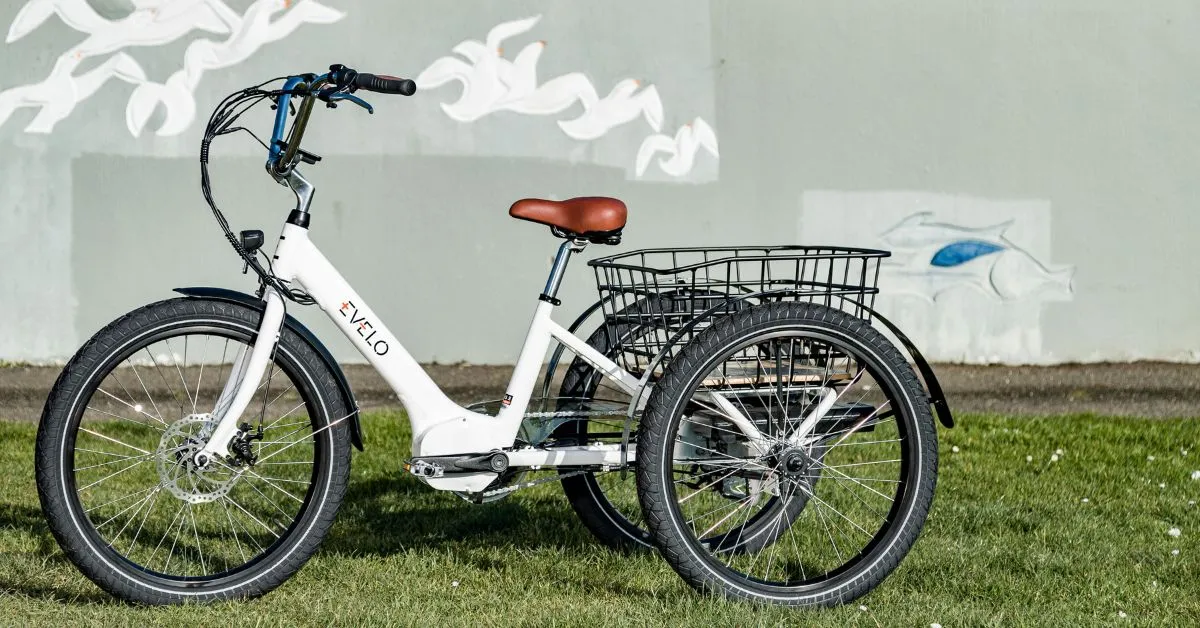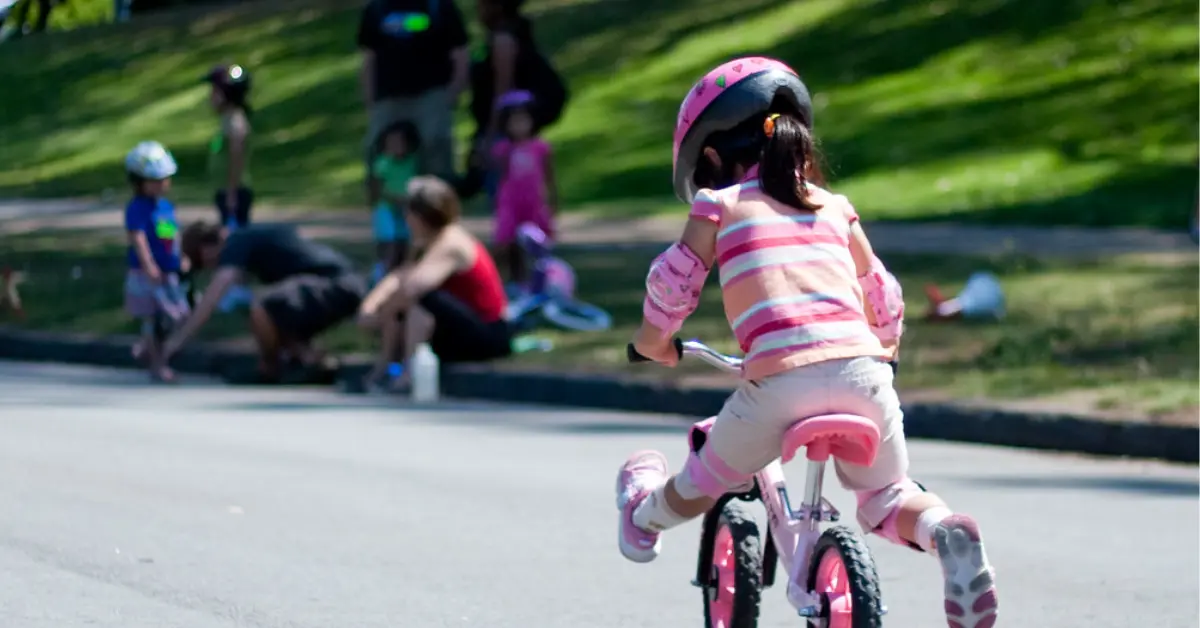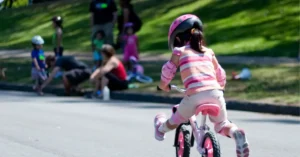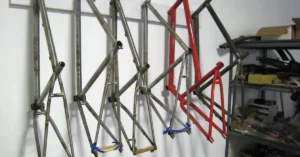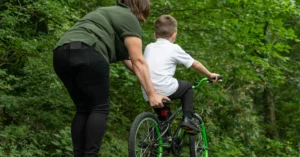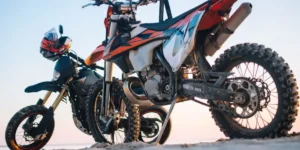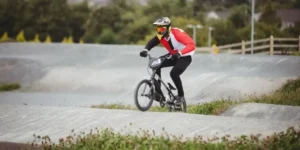Riding a tricycle as an adult or a child offers a unique experience. The importance of tricycle use is multifaceted, from teaching kids balance and motor skills to providing adults with a fun and relaxing mode of transportation.
Tricycles offer the stability that bicycles can’t, especially for those who have trouble balancing on two wheels. They can be a great way for kids to learn how to pedal and steer before moving on to a bicycle.
But when your tricycle pulls to one side, it can become a cause for concern, affecting the safety and enjoyability of the ride. This informative article delves into the issues related to when a tricycle pulls to one side and offers solutions to rectify it.
Table of Contents
ToggleWhy Does a Tricycle Pull to One Side?
The experience of riding a tricycle is both delightful and beneficial. However, when your tricycle pulls to one side, it can raise concerns. This section delves deep into why a tricycle pulls to one side and aims to provide insights into its underlying causes.
Uneven Tire Pressure
Tires play a fundamental role in the movement and balance of any vehicle. If there’s a discrepancy in tire pressure, the vehicle pulls to one side.
- Over time, tricycles, like other vehicles, might lose air from their tires. A tire with reduced air pressure will have more rolling resistance than its counterparts.
- This imbalance can cause the tricycle to lean or pull towards the side of the deflated tire. Regularly checking and ensuring consistent tire pressure is essential to address this issue.
Wheel Misalignment
A common cause when the tricycle pulls to the right side, or the tricycle pulls to the left side is wheel misalignment.
- The tricycle’s wheels need to be parallel to each other and perpendicular to the ground. Even a slight or little misalignment can cause it to pull to one side.
- Factors causing misalignment include accidents, rough handling, or general wear and tear.
Frame or Axle Damage
The tricycle’s frame or axle is foundational to its structure.
- If the frame is bent or the axle is damaged, it can result in uneven weight distribution. This can easily make the tricycle pulls to one side during movement.
- Often, a severe impact or prolonged usage might cause these damages. Do regular inspections to identify such issues early on.
Worn-out Bearings
The bearings in the wheel hubs ensure that the wheels rotate smoothly.
- When these bearings wear out or get damaged, it can cause friction or uneven movement, leading to the situation where the tricycle pulls to one side.
- The solution is to either lubricate or replace the bearings, depending on the severity of the wear.
Differential Brake Force
If a tricycle has brakes on its wheels, uneven brake force can also cause the tricycle to pull.
- If one brake exerts more force than the other, the tricycle might pull towards the side of the stronger brake when braking.
- Regular maintenance and brake adjustments can help alleviate this problem.
Uneven Weight Distribution
Sometimes, the answer is straightforward. If a heavier load is placed on one side of the tricycle, or if the rider’s weight is not centered, it can cause the tricycle pull to one side.
Multiple factors can make a tricycle pull to one side. Regular maintenance, timely inspections, and understanding the underlying causes can help in addressing this problem and ensuring a safe and enjoyable ride.
Side-by-Side Recumbent Bike vs. Top-Down Tricycle
It’s noteworthy to mention the side-by-side recumbent bike when discussing tricycles. The side-by-side recumbent bike is a three-wheeled bike where the riders sit next to each other.
On the other hand, the top-down tricycle is the classic design where one wheel is in the front, and two are at the back. Both designs can face the issue where the tricycle or bike pulls to one side.
Tips to Fix Your Tricycle Pulls to One Side

When your tricycle pulls to one side, it can disrupt your riding experience and even pose potential safety hazards. Addressing this issue is crucial to enjoy a smooth ride. Here are some detailed steps and solutions to help you fix the problem:
1. Check Tire Pressure
The pressure of the tires plays a pivotal role in how the tricycle moves. An uneven tire pressure can mean that the vehicle pulls to one side. It’s vital to:
- Utilize a tire pressure gauge to check each tire’s pressure.
- Compare the pressure to the recommended levels (usually mentioned on the tire or the tricycle’s manual).
- Inflate or deflate as needed to ensure uniform pressure across all tires.
2. Inspect for Damages
Over time, tricycles, just like other vehicles, can undergo wear and tear. If your tricycle pulls to the right side or the tricycle pulls to the left side, it could be due to damaged parts.
- Check the tricycle’s frame for any bends or deformities.
- Examine each wheel. Look for any dents, bent rims, or other visible damages.
- Ensure the axles are straight and not bent or warped.
3. Alignment
Misalignment is another common reason why a tricycle pulls to one side. To address this:
- Place the tricycle on a flat surface and check if it sits level.
- For front-wheel misalignment, loosen the bolts holding the wheel slightly. Adjust the wheel until it’s straight and then tighten the bolts.
- For rear wheel misalignment, you might need to adjust the position of the rear axle or seek professional assistance.
4. Check the Parent Push Handle
If you have a tricycle with a parent push handle, it’s essential to ensure that this feature is working correctly. Sometimes, if the smart trike parent steering is not working, it can cause the tricycle to pull.
- Inspect the handle’s connection to the tricycle. Make sure it’s securely attached.
- Check for any obstructions or damages to the handle or its connecting mechanisms.
- If the steering mechanism is damaged, consider replacing the part or consulting the manufacturer for guidance.
5. Test Ride and Observe
After making the necessary adjustments, take the tricycle for a short ride. Observe if the tricycle pulls to one side or if the issue is resolved. Sometimes, the problem might need a combination of fixes to be fully addressed.
6. Consult a Professional
If you’ve tried the above tips and the tricycle pulls to one side persistently, it might be best to consult a professional or the tricycle manufacturer. They can offer insights that might be specific to the make and model of your tricycle.
A tricycle that pulls can hamper the joy of riding. By taking systematic steps and paying attention to the tricycle’s components, you can ensure a smooth and safe journey for both kids and adults.
The Challenges with Modern Tricycles
Modern tricycles come with enhanced features for parents and children. For instance, a tricycle with a parent push handle allows parents to guide the tricycle, ensuring their child’s safety. However, these features can sometimes malfunction.
If your smart trike parent steering is not working, it can cause the trike to pull to one side. Similarly, the challenge with a small trike with push or a three-in-one tricycle can also be related to alignment and steering issues.
Twin trike with parent handle is another popular option for parents with twins or two young children. While they offer the benefit of pushing both children simultaneously, they can also suffer from the issue where the tricycle pulls to one side if not maintained well.
Importance of Tricycle

The importance of tricycles in both recreational and developmental spheres is undeniable. Often perceived as a child’s plaything, the tricycle holds a more profound significance in various aspects of growth, learning, and even adult transportation. Here’s a detailed look into the importance of tricycles.
Tricycles serve as an introduction to the world of cycling for most children. Before they hop onto bicycles, tricycles provide the first taste of what it feels like to pedal, steer, and move on wheels.
This early exposure to riding isn’t just about fun; it’s layered with developmental benefits.
Motor Skill Development: Riding a tricycle demands coordination. The synchronous action of pedaling with the legs while steering with the hands facilitates the development of gross motor skills in children.
As they push and steer, children also hone their hand-eye coordination, strengthening neural connections that are vital for various tasks in life.
Balance and Spatial Awareness: While tricycles offer more stability than bicycles, navigating them around obstacles or steering them in desired directions instills a sense of balance and spatial awareness in children.
They become more aware of their surroundings, judge distances better and reacts swiftly to avoid collisions.
Confidence and Independence: There’s a certain pride and joy that children derive from being able to ride on their own. This boost in confidence can have a cascading effect on other areas of their life.
The tricycle becomes a tool that fosters a sense of independence and self-reliance at an early age.
Physical Fitness: In today’s digital age, where screen time often trumps outdoor play, cycling offers an excellent avenue for physical activity.
Riding helps in muscle development, cardiovascular health, and overall fitness, ensuring children receive their dose of physical exercise in an enjoyable manner.
Safety and Control: The design of a tricycle inherently offers more stability than a two-wheeled counterpart. This added safety feature is especially crucial for children who are just beginning to explore the world of riding.
They can learn the basics of acceleration, deceleration, and steering in a controlled environment.
But the importance of tricycles isn’t confined to children alone. In recent years, adult tricycles have gained popularity, especially among seniors or those with balance issues.
For them, tricycles offer a safe, low-impact form of exercise. They can enjoy the benefits of cycling without the risk of falls inherent to bicycles.
Conclusion
A tricycle offers numerous benefits, from teaching balance to providing a comfortable ride. However, when your tricycle pulls to one side, it requires immediate attention.
Whether it’s due to misalignment, tire pressure, or malfunctioning features like a tricycle with a parent push handle, addressing the issue promptly ensures a safe and enjoyable ride.
As tricycles evolve with features like smart trike parent steering not working or designs like top-down tricycles, it’s crucial to understand their mechanics and ensure they’re in top condition.

